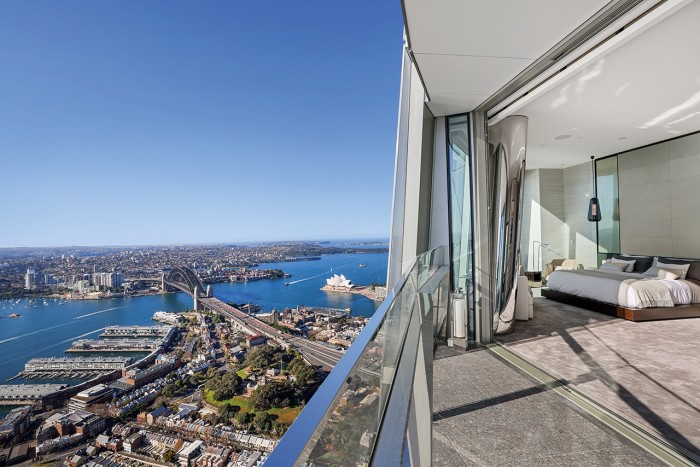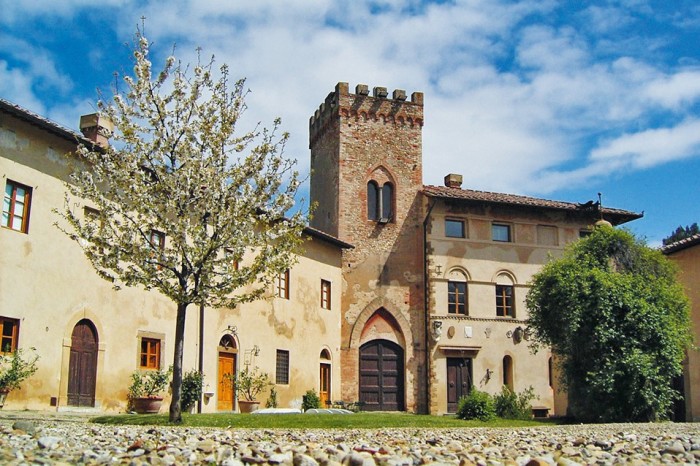Rooms with an oooh

Simply sign up to the Property myFT Digest -- delivered directly to your inbox.
“I want so to see the Arno,” insists Lucy Honeychurch as she is confronted with the dismal vista at her Florence guesthouse in EM Forster’s A Room with a View. The prospect of a stunning view – so often a sales sweetener in glossy property brochures – has not always been quite so prized as it is now. The forthcoming exhibition Reframed: The Woman in the Window at London’s Dulwich Picture Gallery, from 4 May to 4 September, documents the often fraught relationship between the home and what lies beyond.
“In the ancient world, the practice of looking out of the window was debated in relation to decorum, morality and religious beliefs,” says the show’s curator, the art historian Dr Jennifer Sliwka. “It was only under the Romans that the window view became a sign of the power of a family over their dominions and over nature. The Romans introduced the idea of ‘prospectus’, and passed laws preventing new homes obstructing the outlook of existing ones.”

For the medieval baron, whose castle was both home and fortification, mastery of all he surveyed was critical to survival. Examples that still exist today now offer the privilege of overlooking ample acreage: take the 25-bedroom castello in Florence, Tuscany, on sale for €20mn through Romolini Immobiliare, an affiliate of Christie’s International Real Estate, which overlooks 90 hectares of vineyards and olive trees, with its own panoramic tower framing views of the Chianti hills.


The rapid development of cities that accompanied industrialisation meant householders became as preoccupied with who was looking in as what they were looking out at. “There was a growing concern with ‘infringement’ – with who was allowed to look at what and who could pay for that privilege,” says Sliwka. “It’s something we’ve seen recently in the case of flat owners near the Tate Modern who took legal action because visitors to its viewing platform were staring into their windows.”
Today’s wealthiest city buyers undoubtedly believe an elevated view confers prestige – an idea that has become central to what is known as “elite place-making” in real estate. Notable examples include the 72 residential floors at London’s The Shard; the 71 tiers providing homes at Sydney’s Crown Residences at One Barangaroo (where the penthouse is for sale at AUD$100mn – about £54.85mn – with Knight Frank); Dubai’s record-breaking 160-plus-storey Burj Khalifa; or the string of super-towers spiking midtown Manhattan.

New York’s The Brooklyn Tower will launch its sales this spring. A 93-floor high-rise, it will not only give the Brooklyn neighbourhood its first “supertall” skyscraper but provide a new perspective on the city. “The residential part of the building starts on the 53rd floor,” says Georgina Atkinson, an associate partner at Knight Frank that, in association with Douglas Elliman, is marketing apartments starting from $875,000. “Every owner will be able to see the Manhattan skyline, the East River and the Statue of Liberty.” The development also has the added bonus of residing close to the DeKalb Avenue subway stop, 10 minutes from the centre of town.

In most cities, the highest premium will be achieved for specific views from specific locations: whether that’s New York’s Central Park from its eastern and southern fringes; the Eiffel Tower from Paris’s 7th arrondissement; or London’s Thames from an SW postcode (such as 9 Millbank, where penthouses in the Heritage Collection are on sale from £18mn).
The pandemic has only added to the value we put on this “prospect”, and even the most urban of buyers now prefers an expensive view to look out over greenery or water. Living close to a park – but, more significantly, having views over it – undoubtedly ups the price, and recent research carried out by Knight Frank shows that while park-adjacent property is worth 18 per cent more than equivalent homes further away, a park view – whether adjoining or not – commands an average premium of 34 per cent in the five cities (London, New York, Singapore, Hong Kong and Sydney).

Proximity to manicured parkland, an elegantly railed garden square or a thoughtfully planted parterre has long been considered a positive attribute, but it was not until the advent of Romanticism that painters such as Constable and Turner convinced us to prize uncultivated nature. Today this consensus is, of course, widespread, but while the Georgians admired the great outdoors for its power to convey moral truth, our enthusiasm is underpinned by the belief that living close to nature improves our wellbeing.
The hospitality industry, so often a template for residential trends, has picked up on this with the concept of nature-immersed landscape hotels. “A landscape hotel is about stripping away all distractions and focusing on the view,” says Nolan McHugh, co-creator of the Piaule Catskill, a hotel in the genre that opened last summer in New York State. Here, a clutch of raised cabins with floor-to-ceiling glass walls encourage the gaze outwards onto peaks and treetops, while activities include forest bathing, hiking or a swim in the salt-water pool.
The Piaule Catskill’s clientele of urban escapees is also the focus of developer David McAdam, whose company Homestead Modern has created similar cabins at Joshua Tree National Park. McAdam’s background in selling prefab steel structures encouraged his belief that the inhospitable desert rocks offered an ideal environment to create what he calls a “lonely-planet experience”.

“You feel you are on the moon when in fact you’re only a two-hour drive from Los Angeles,” he says. “We offer houses carefully positioned around protected trees to ensure every home provides the maximum seclusion, making five acres feel like 500 by clever screening.” Buyers can work with Homestead Modern to build their own home, and the price point (from $750,000) makes them a good option for weekend communing. A plus point – or downside, depending on your perspective – is that owners must agree to share their view, putting their property into Homestead Modern’s rental pool. “However, we don’t put a cap on how many days an owner can use them,” says McAdam.
Sea views are popular, but they can prove problematic. “Opening up the shutters in the morning to take in a scene of the ocean puts 15 to 30 per cent on top of the price pretty immediately,” says Edward de Mallet Morgan, a partner at Knight Frank within the super-prime sales team. “But purchasing a view can be seriously impacted by a busy road running in front, or a public footpath which needs to be crossed to get to the beach.”

Countries where there are government-protected historical sites offer some reassurance that an unspoilt view will be unlikely to change. “In Israel, anything newly built has to take account of existing landmarks,” says Aby Rosen, co-founder and principal of RFR Holding LLC, which was responsible for converting a 19th-century French hospital in Tel Aviv into The Jaffa Hotel & Residences, designed by John Pawson and Rami Gil. Here the penthouse ($65mn) not only has a striking interior but also offers 360-degree views of the Mediterranean and the ancient port.

It’s a similar case with some of the world’s most treasured parklands. “One of the reasons for the super-tall towers in New York is that, in specific locations near Central Park, it’s unlikely something much taller will be built that’s going to block your view,” says Michael Golden, joint CEO of Christie’s International Real Estate. Hence the price tag for the penthouse at 432 Park Avenue, which went on sale last year for $169mn.
In the countryside, gaining surety can be even more difficult, and it can be money well spent to employ a buying agent. “We provide clients with a report on everything from planned rubbish tips to new wind farms – things that will not necessarily show up on a lawyer’s search,” concludes Charlie Ellingworth, founder of the property search agent Property Vision. As the Romans discovered more than 2,000 years ago, there’s nothing more distressing than someone or something unexpected getting in the way of your prospectus.

Comments